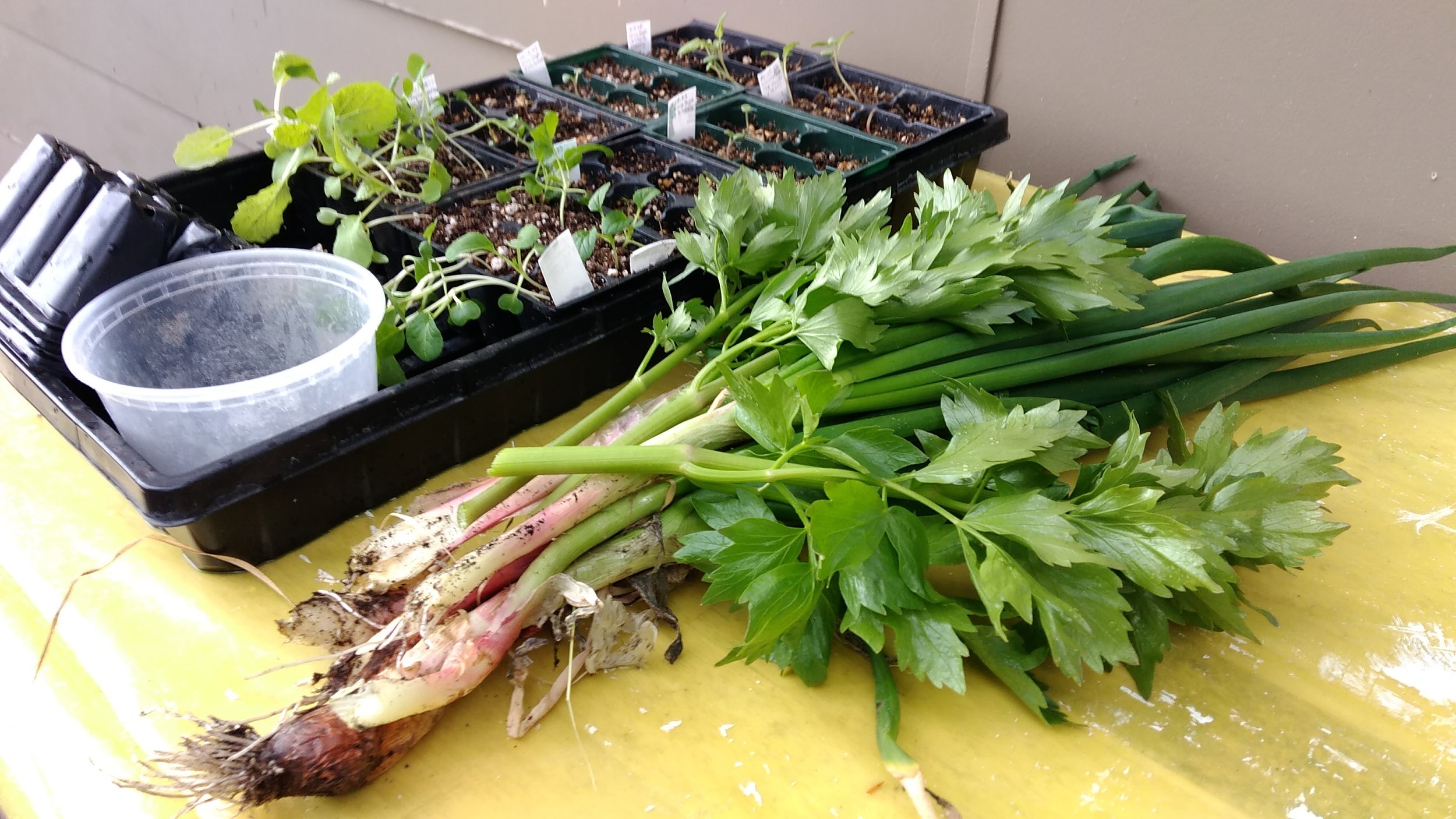What’s Growing this Spring?
Planting Season Highlights… and Some Tough Personal News
To tell you the truth, late winter and early spring were excruciating for us. Back in February, our beloved Mattie-dog broke her back right leg. She slipped on some ice. The fall wasn’t so bad, so why did she break her femur? Because that bone had a tumor on it.
That morning, we were enjoying our pleasant winter vibe of garden-planning and enjoying snowy hikes with our older but very fit cattle dog. By late afternoon, we were in the canine ER hearing Mattie’s diagnosis.
We had to choose whether to put her down right away or, if we let her live, amputate the leg and consider chemotherapy. If we opted not to do chemo, she would live 1 to 3 months. With chemo? 6 to 9 months. Put her down now, or save her so she can live a few months.
It was a choice between awful and terrible. One of those train wreck moments that no one can plan for.
I’m not okay with chemotherapy for animals. John isn’t either. We drew the line there. But I had also heard of dietary choices that could be almost as effective as chemo in delaying recurrence.
In any case, we weren’t ready to put Mattie down in that moment. Other people would have, and we totally respect that. We just couldn’t.
Mattie is still alive. And three-legged. Every day she teaches us about perseverance, adaptation, resiliency. She’s not miserable. For all those who feel “you should never put a dog through that”, I don’t know what to tell you. I hear more and more “three-legged dog stories” every day. That’s because Mattie is up and at it, still going to her favorite parks, trails, and stores, and everyone we meet has a “three-legged dog story”. Mattie’s still having a blast. I’m grateful we let her live. She’s still enjoying her life and inspiring everyone around her.
If you’re ever confronted with this awful choice (to euthanize your dog go or amputate a limb), do not worry about whether your dog will be able to adapt or whether they’ll hate being three-legged. Dogs don’t think that way. They don’t feel sorry for themselves. They just adapt. If a dog’s other three legs are healthy (no arthritis or joint defects, no other tumors), and they were athletically fit before the accident, they can and will adapt.
The real deciding factor is whether the HUMAN can handle it.
Physically caring for Mattie is a massive challenge. She’s 65 pounds. We’re both getting older and struggle to lift more than 40 pounds. John may have a knee surgery later this year. I frequently deal with old injury pain. Mattie needs hands-on help every day, multiple times a day. Especially in tri-level house. She is learning to navigate down stairs on her own (!), but we have to be present to spot her, and we pretty much carry her to go up the stairs. She wears a special harness during all waking hours, so we can support her anytime she gets tired. We lift her in and out of cars. All that leaves us pretty tired.
So. That question of what we’re growing this year…
The answer is: LESS.
We’re focused on caring for the dog who helped us out so much for years. The tables have turned. For as long as she’s with us, we will make her care our priority. That’s exhausting, so there will simply be less energy for microfarm tasks.
I’m still planting veggie starts, but only about one-third of the usual.
I’m planting tomatoes, but only half of the usual, and only in areas near the house in beds with existing hoop house frames (easy to cover for frost protection).
Several annual veggie beds will get straw mulched and allowed to be fallow.
You know what? It’s okay. Maybe Mattie’s final big gift to me is teaching me it’s okay to scale back. It’s good even.
Our pace and “yield goals” in recent years have been ambitious and exhausting—for us and for the land. It’s time to let perennial plants fill in and harvest what the land provides for us on its own. Let those over-taxed annual beds absorb some fresh compost, and let the worms work their renewing wonders.
That’s actually the heart of permaculture. Most of our perennial food plants (berries, fruit trees, self-seeding greens, herbs) are three to six years old now. Those plants should be able to take care of themselves.
We’ll let you know how the yield is affected. It will be interesting to see if one-third of the effort results in one-third of the yield. Or will nature play with the math. We’ll find out.
We’ll keep you posted about Mattie too!



